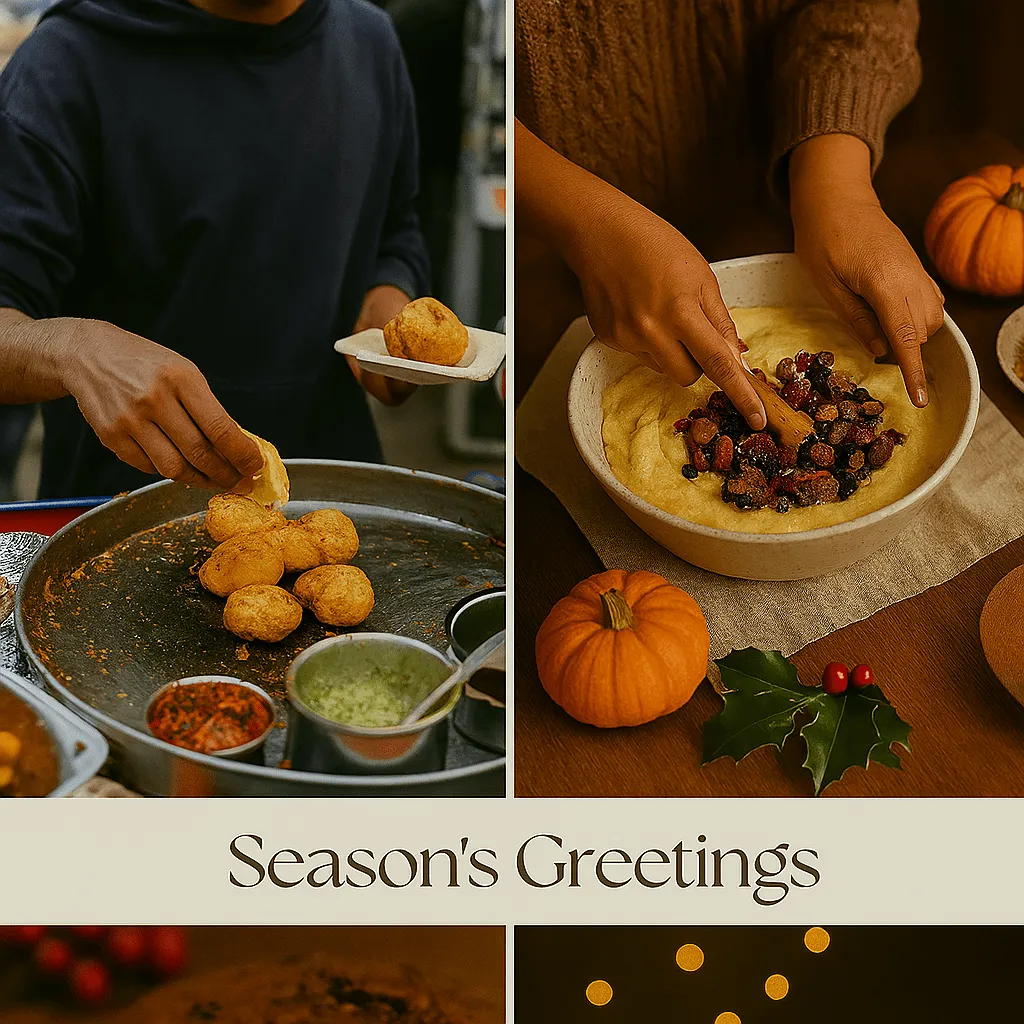A Quiet Thanksgiving Across Cultures
“Thanksgiving begins not with feasts, but with silence — gratitude adapting across cultures.”
The oven hums softly, carrying forward the anticipation from the Cake Mixing Ceremony. The cake mixing ceremony, rooted in 17th‑century Europe, reminds us that rituals adapt across cultures, yetthe tables in Mumbai or Lisbon tell a different story — quieter, more reflective. Here, gratitude is not loud; it is layered, waiting to be shared in small gestures.
This Quiet Thanksgiving is less about spectacle and more about pause, reminding us that gratitude often begins in silence before it finds voice in ritual.
Rituals of a Quiet Thanksgiving in India
In India, Thanksgiving is not a mainstream festival. Gratitude finds its rhythm in Diwali lamps, Eid feasts, and Christmas gatherings. Thanksgiving cultural history
Each celebration carries echoes of thankfulness, even if the word “Thanksgiving” is absent. Families gather, food is shared, and rituals remind us of abundance.
Globally, the pulse is familiar: communal meals in the U.S., harvest festivals across Europe, family rituals in Asia. Gratitude becomes a universal rhythm, not bound to one holiday but expressed in countless forms — a reminder that thankfulness transcends calendars. A Quiet Thanksgiving is not about adopting a foreign tradition wholesale, but about recognising the shared human need to pause, reflect, and give thanks.

Quiet Thanksgiving reflections in global traditions
Traditions shift when transplanted. A turkey may be replaced by roast chicken, prayers reshaped into songs, and pumpkin pie set beside bowls of tropical fruit. Mumbai’s festive tables reflect this adaptation: vada pavs beside roast chicken, fruit bowls beside pumpkin pie. Lisbon’s bifanas, layered with citrus zest and cinnamon, echo abundance in their own way.
Each table becomes a mosaic of cultures, reshaping rituals without losing their essence. A Quiet Thanksgiving in Mumbai might mean fruit bowls soaked in rum beside Diwali sweets, while in Lisbon it might mean citrus zest folded into batter beside pastel de nata. The ritual adapts, but the gratitude remains constant.
Small Acts, Big Gratitude — A Quiet Thanksgiving Lens
Gratitude is not always grand. Sometimes, it is found in pouring tea, lighting a lamp, or sharing food with a neighbour. These quiet acts remind us that thanksgiving is less about spectacle and more about patience, reflection, and community.
The trilogy cadence holds:
- Street Food Diaries taught us survival and rhythm.
- The Cake Mixing Ceremony gave us ritual and remembrance.
- A Quiet Thanksgiving offers reflection and adaptation.
Together, they form a narrative arc that carries us from the street to the season, from survival to gratitude.
Anticipation and Continuity
The oven waits, and so do we. The batter rests, tables are set, and gratitude lingers in the air. A Quiet Thanksgiving is not just about food; it is about anticipation — waiting for warmth, for stories, for the season to rise.
Closing Note
From quiet tables to festive arcs, gratitude carries us forward. This post closes the Thanksgiving reflection and signals continuity: next, we turn to Christmas and New Year’s rituals, where gratitude transforms into celebration.
Continue the Trilogy
Coming Next
We turn to Christmas and New Year’s rituals — where gratitude transforms into celebration.






